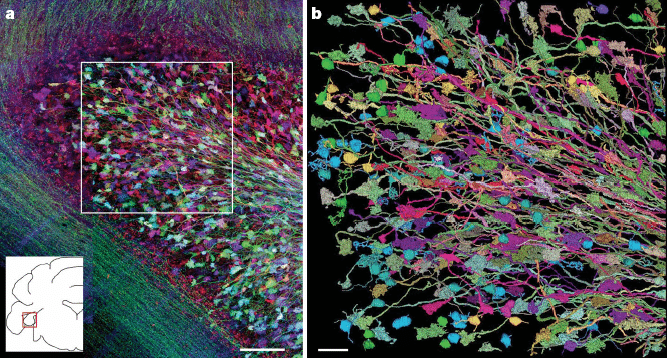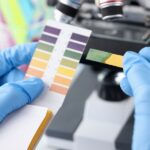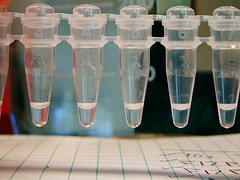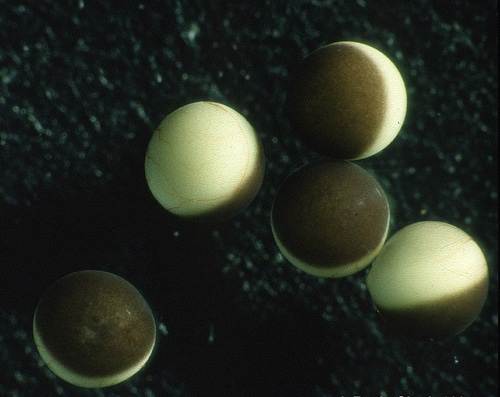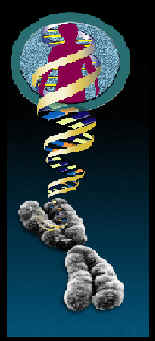Search results for:
How to: Keep your data organized
Talented, enthusiastic scientist required. Must have good organizational skills. Do you fit the bill? With the pace of molecular biology and biochemical research quickening year on year, the importance of…
Read MorePCR Problems? Try an Additive
You’ve tried all the usual stuff, and checked the primer sequences twice, but still can’t get that PCR fragment amplified. It’s time to enter the strange world of PCR additives….
Read MoreLow cost DNA gel documentation
Equipment for DNA gel photography, such as photographing DNA gels stained with ethidium bromide (or other fluorescent dyes), doesn’t have to cost thousands of dollars. These days, great pictures can…
Read MoreCodon Usage Analysis
Problems with expressing your gene? One of the potential stumbling blocks in heterologous gene expression is incompatible codon usage. Every amino acid can be encoded by more than one codon,…
Read More10 links: Free Mac Software for Molecular Biologists
I’ve put together this list of 10 pieces of free molecular biology software for Macs. I hope you will find at least some of it useful. If any of your…
Read MoreEthidium Bromide: Understanding the Dangers
Our old friend ethidium bromide (EtBr) has achieved an almost legendary villain status among many molecular biologists, rivaling that of Scar in The Lion King. The panic regarding its use…
Read More10 Do’s and Don’ts for PhD Students
My PhD is rapidly becoming a distant memory. Before nostalgia completely obscures my recollections of this chapter of my career, I thought I’d jot down some pointers for prospective and…
Read MoreUnderstanding The Optimum Temperature For Enzymes
Do you know why there is an optimum temperature for enzymes? Does it even matter? Read on to discover why it is important to know and how this knowledge could…
Read More5 Ways to Clean Up A DNA Sample
One of the most common tasks in molecular biology is DNA clean-up. We clean up DNA from aqueous solutions to remove buffer salts, enzymes, or other substances that could affect…
Read MoreTime to Think
Spare a thought for your poor over-worked neurons. In the information age, they are bombarded with input from the moment they are dragged into consciousness by the radio alarm clock…
Read MoreFluorescent Neurons Over the Brainbow
Site-specific recombinases have, for the past 20 years, been one of the most powerful tools in studying the functions of all sorts of genes. Most widely used as the Cre/lox-based…
Read MoreA Short History of Cell Biology
The defining feature of cell theory is that single cells are the fundamental unit of life and can exist alone or combine to form multicellular organisms. The history of cell…
Read More10 Reasons NOT to be a Scientist
Ok, this week has been a bad week in the lab so far. A few weeks ago I wrote a post describing 15 reasons to be a scientist. Today I…
Read MoreLab Basics: How The Alkaline Lysis Method Works
Alkaline lysis was first described by Birnboim and Doly in 1979 and has, with a few modifications, been the preferred method for plasmid DNA extraction from bacteria ever since.[1] The…
Read MoreChoosing a Post Doc Position
After all that hard work, you finally have your PhD. Now what? If your career choice is academic research, your first post-doc position beckons. The choice of where, and with…
Read MoreRookie Researcher Disasters
Wide eyed and wet behind the ears, the rookie researcher steps into the lab for the first time. Armed with several years’ knowledge mined from text books, lectures and undergrad…
Read MorePlease, don’t take Bitesize Bio “on Faith”
Science is an endlessly fascinating, challenging, and intellectually-satisfying endeavor. So it saddens me any time that I see someone mistakingly make claims about taking science on faith. This isn’t the…
Read More20 Ways to Increase your Productivity
No matter how efficient you are, it’s always possible to improve your productivity and improving your productivity means that you get more of the rewards you are trying to obtain:…
Read More8 Approaches to Random Mutagenesis
Random mutagenesis is an incredibly powerful tool for altering the properties of enzymes. Imagine, for example, you were studying a G-protein coupled receptor (GPCR) and wanted to create a temperature-sensitive…
Read MoreEthanol Precipitation of DNA and RNA: How it Works
DNA and RNA are hydrophilic (water-loving) molecules and, therefore, soluble in water. Ethanol precipitation of DNA and RNA works by adding salt and ethanol to a DNA solution, which makes…
Read MoreThere’s No Need To Be Paranoid About RNA Purification
RNA purification may be a common procedure in molecular biology but it is by far the one that people fear most. Why? Dreaded RNase. It’s everywhere… all over your bench…
Read MoreAlternative Careers For Scientists
What happens when you finally get the life sciences degree you worked so long for and then realize you really don’t want to spend the rest of your life in…
Read MoreWho Else Thinks Biology Teaching Methods are Wrong?
I shudder to think of the way I was taught about metabolic pathways as an undergrad. Lists of mysterious names connected by arrows – all to be memorized, with little…
Read MoreNo More White Elephants! – Consider this Before Buying a Real-time PCR Cycler
Does your lab have a closet full of white elephants; once expensive instruments that are no longer fit for purpose, or have broken down? In many cases, all of that…
Read MoreModel Organisms in Biomedical Research
The term “model organism” is often used in research, to describe species that are extensively studied to understand particular biological phenomena. We say “model,” because there is usually the expectation…
Read MoreDictyostelium as a Model
As noted in the previous post on Model Organisms, Dictyostelium discoideum is a popular model for studying fundamental aspects of cell-cell communication and chemotaxis. This is a soil-living social amoeba…
Read MoreThe Essential PCR Troubleshooting Checklist
Routine PCR? Let’s be honest, there’s no such thing. Even with the simplest PCR reaction things can go wrong, so you need to have a good checklist of ideas for…
Read More17 Ways to Stop Pipetting Errors From Ruining Your Experiments
If you work at the bench, accurate pipetting is crucial. Without accurate pipetting, your experiments wouldn’t be reproducible, your stock solutions would be inaccurate, and your assays would have such…
Read MoreXenopus as a Model for Early Development
Another popular model organism is the African Clawed Frog, Xenopus laevis, which is extremely useful for studying development and cellular physiology, owing to its particularly large and easy manipulable oocytes…
Read MoreWorms: Models of Development
Continuing with the recent theme on model organisms, there is the nematode (roundworm) Caenorhabditis elegans. This organisms is particularly useful owing to the fact that it has very defined development…
Read MoreWarning: Dihydrogen Monoxide is Worse Than Ethidium Bromide
Please read and pass this life-saving information on to your friends. A chemical that all of us use in the lab has turned out to be highly dangerous. It is…
Read MoreThe Basics: How Phenol Extraction of DNA Works
Phenol extraction of DNA is a commonly used method for removing proteins from nucleic acids, e.g., to remove proteins from cell lysate during genomic DNA preparation. It’s commonly used, but…
Read MoreSending Plasmids: How to Avoid Jail Time and Shredded Envelopes
Whether you need to get your plasmid DNA to a lab on the other side of the world, or a few hundred miles down the road, it’s important to make…
Read MoreLigation Independent Cloning Primer Design
Ligation independent cloning (LIC) is an easy and effective method to ensure successful cloning, all without the need for ligation. As easy as the technique is, designing primers can be…
Read MoreZebrafish: Making Development Transparent
With the recent development of transparent Zebrafish, allowing scientists to directly view its internal organs, and observe processes like tumor metastasis and blood production after bone-marrow transplant, it seems appropriate…
Read More10 Unmissable Bio Flick and Pic Galleries
A picture tells a thousand words. So I suppose a movie tells 24,000+ words per second. Whether you use them for educating, self-study or just for your viewing pleasure, photos…
Read MoreTop 5 Books from Experimental Biology
I just got done reading Ernst Mayr’s The Growth of Biological Thought, which is on the history and philosophy of biology, from Aristotle to ~1980 (written in 1982). Of particular…
Read MoreEthidium Bromide: The Alternatives
How can you avoid the perils of exposing DNA to UV light during cloning procedure? Use an alternative DNA stain! Ethidium bromide is not your only option. In this article,…
Read More18+ Ways to Improve your PubMed Searches
Do you *really* know what you’re doing when you search for articles in PubMed? Are you familiar with Boolean operators? What does “MeSH” mean to you? Can you locate (and…
Read MoreHow To Become A World Expert In Your Field
Only a handful of people ever become world experts in their field. The rest attain somewhere between a functional and world expert level of knowledge. So what makes the best…
Read More







